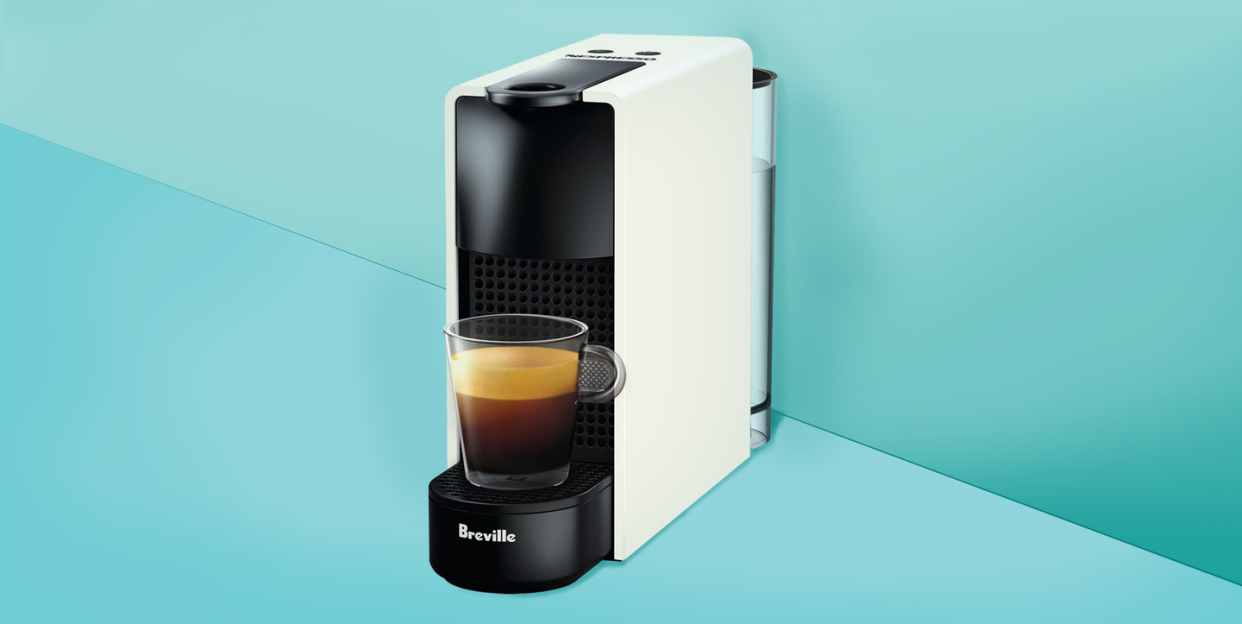Top 5 Espresso Machines to Buy in 2019

If you're looking to cut down on visits to your local coffee shop, the best home espresso machines can help you get your caffeine fix right in the comfort of your own kitchen. But an espresso machine is an investment — especially if you want one with all the bells and whistles — so it's important to consider the types of features that fit your needs.
To find the best home espresso machine, the Good Housekeeping Institute's Kitchen Appliances and Technology Lab tested a mix of super-automatic, automatic, semi-automatic, and capsule machines, which we selected based on popular brands, best-selling machines, and unique attributes. Some had milk frothers and some didn't. We evaluated each on ease of use, time to brew, consistency, taste, and how loud they were. Our favorites were the super-automatic and automatic machines that were easy to set up, simple to use, and didn’t require a user manual (although we didn’t mind referring to the easy-to-read ones). We also gave preference to the machines that heated up quickly and didn’t require a lot of waiting around. The best machines produced a hot, smooth cup of espresso that had depth and wasn't too bitter or acidic, with crema that was smooth without any noticeable big or small air bubbles.
How does an espresso machine work?
First, it's important to understand the difference between regular coffee and espresso. Here in America, we’re used to drip coffee makers that serve up a hot mug of joe by running heated water (about 200°F) through medium-ground coffee beans. According to the Specialty Coffee Association, the perfect cup takes about six to eight minutes to brew, which allows the maximum amount of flavor to be extracted from the beans.
Espresso is made similarly but uses a lot less water, finer grounds, and a minimum of nine bars of pressure, according to the Italian Espresso National Institute, which shortens the brewing time to less than 30 seconds. The result is thicker, creamier, and stronger-tasting than drip coffee. While a single shot of espresso typically measures in at .88 of an ounce, espresso has more caffeine per fluid ounce than drip coffee (between 375 mg and 520 mg per 7.6-ounce cup of espresso, compared to between 95 mg and 165 mg per 7.6-ounce cup of coffee, according to Nespresso).
There are several ways to make espresso. While it's possible to make espresso without a machine (we happen to love Bialetti's stovetop espresso maker), espresso made via the stovetop method actually doesn't qualify as true espresso according to the Italian Espresso National Institute because it doesn't use enough pressure. When it comes to espresso machines, some are manual, while others are semi-automatic, automatic, super-automatic, or fully automatic pod machines.
How to find the right espresso machine for you
Manual machines require finely ground beans that are scooped into a portafilter and tamped down. Then the filter is attached to the brew head and a lever is used to manually pull water through the grounds. It is the most customizable method and arguably the most difficult to master.
Semi-automatic machines are similar to manual machines in terms of preparation but they operate with a button or dial that automates the water flow instead of a lever. The size of the espresso or coffee-drink may be controlled.
Automatic machines also use a button instead of a lever to brew espresso. The size of the espresso or coffee-drink is automated and often programmable. This method offers more consistency than a manual or semi-automatic machine.
Super-automatic machines are a step above automatic machines. In addition to automated and programmable coffee sizes, they can also grind beans, measure them out, and often tamp them.
Capsule machines use capsules or pods filled with pre-measured coffee to make espresso or other coffee drinks. They offer the most consistency.
You Might Also Like
